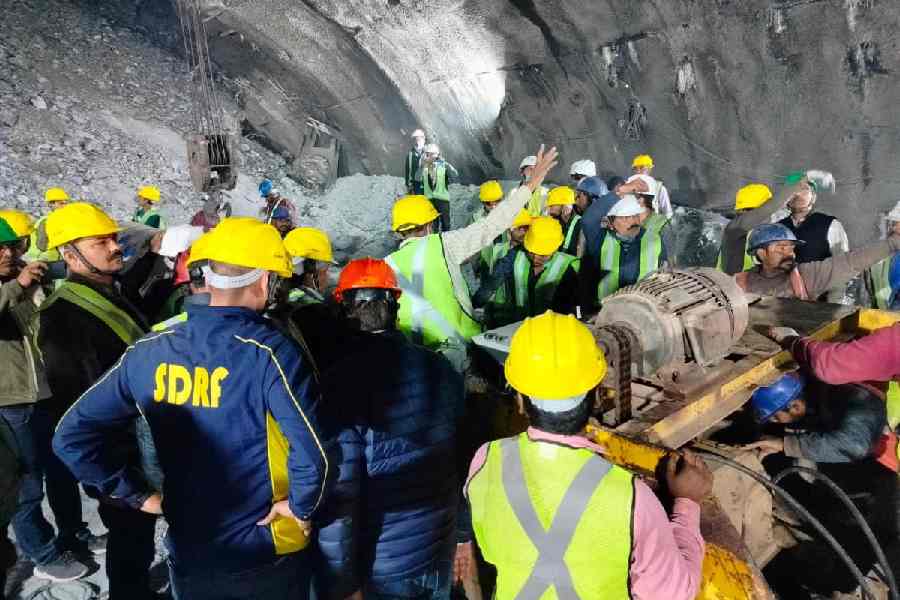
Uttarakhand Tunnel Collapse: A Stark Reminder of Unrestrained Development in Fragile Ecosystems
Prioritizing Sustainability over Unrestrained Growth
By: Javid Amin
The recent tunnel collapse in Uttarakhand, India, has served as a stark reminder of the consequences of unrestrained development in fragile ecosystems. The tragedy, which claimed the lives of over 30 workers, highlights the urgent need to reassess our approach to development in the Himalayan region, particularly in light of the growing emphasis on tourism.
The Himalayan region, characterized by its towering peaks, pristine landscapes, and unique biodiversity, has long been a magnet for tourists and developers alike. However, this influx of human activity has placed immense pressure on the region’s delicate ecological balance. Deforestation, infrastructure development, and unsustainable tourism practices have all contributed to the degradation of the environment, making it increasingly vulnerable to natural disasters like landslides and floods.
The Uttarakhand tunnel collapse is a poignant example of this ecological vulnerability. The tunnel, part of a larger hydropower project, was being constructed in a seismically active area, known for its landslides. Despite these risks, the project was pushed forward, with little regard for the potential consequences.
The tragedy has sparked a wave of criticism and introspection, forcing us to question the very foundations of our development models. Are we, in our pursuit of economic growth and progress, willing to sacrifice the environment and the lives of those who depend on it?
The answer, quite simply, should be no. We must recognize that development cannot come at the cost of our planet’s well-being. We must learn to coexist with nature, not exploit it.
In the context of the Himalayan region, this means adopting a more holistic and sustainable approach to development. We must prioritize renewable energy sources over hydropower projects that disrupt the environment. We must promote eco-tourism practices that minimize the impact on local ecosystems. And we must invest in disaster preparedness and mitigation measures to reduce the vulnerability of communities living in these fragile regions.
The Uttarakhand tunnel collapse is not just a tragedy; it is a wake-up call. It is a reminder that our actions have consequences, and that we cannot continue to play with nature without facing repercussions.
The time to act is now. We must rethink our development models, prioritize sustainability, and respect the delicate balance of the Himalayan ecosystem. Only then can we ensure a future where development and environmental protection go hand in hand.
Here are some specific recommendations for sustainable development in the Himalayan region:
-
Prioritize renewable energy sources: Hydropower projects, while seemingly sustainable, can have significant environmental impacts. Instead, focus on renewable energy sources like solar and wind power, which have a smaller ecological footprint.
-
Promote eco-tourism practices: Tourism can be a valuable source of income for communities in the Himalayan region, but it must be managed sustainably. Encourage eco-tourism practices that minimize the impact on local ecosystems, such as low-impact trekking and responsible wildlife viewing.
-
Invest in disaster preparedness and mitigation: Climate change is increasing the frequency and intensity of natural disasters in the Himalayan region. Invest in disaster preparedness and mitigation measures, such as early warning systems and infrastructure resilience, to reduce the vulnerability of communities.
-
Involve local communities in decision-making: Local communities have a deep understanding of the Himalayan environment and its vulnerabilities. Involve them in the planning and implementation of development projects to ensure that they are sustainable and respectful of local ecosystems.
-
Strengthen environmental regulations and enforcement: Enforce existing environmental regulations and implement stricter ones to protect the Himalayan ecosystem. Hold developers accountable for the environmental impacts of their projects.
The Uttarakhand tunnel collapse is a tragedy, but it also an opportunity to learn and change. Let us not waste this opportunity. Let us work together to create a future where development and environmental protection go hand in hand, ensuring a sustainable and prosperous future for the Himalayan region and its inhabitants.

